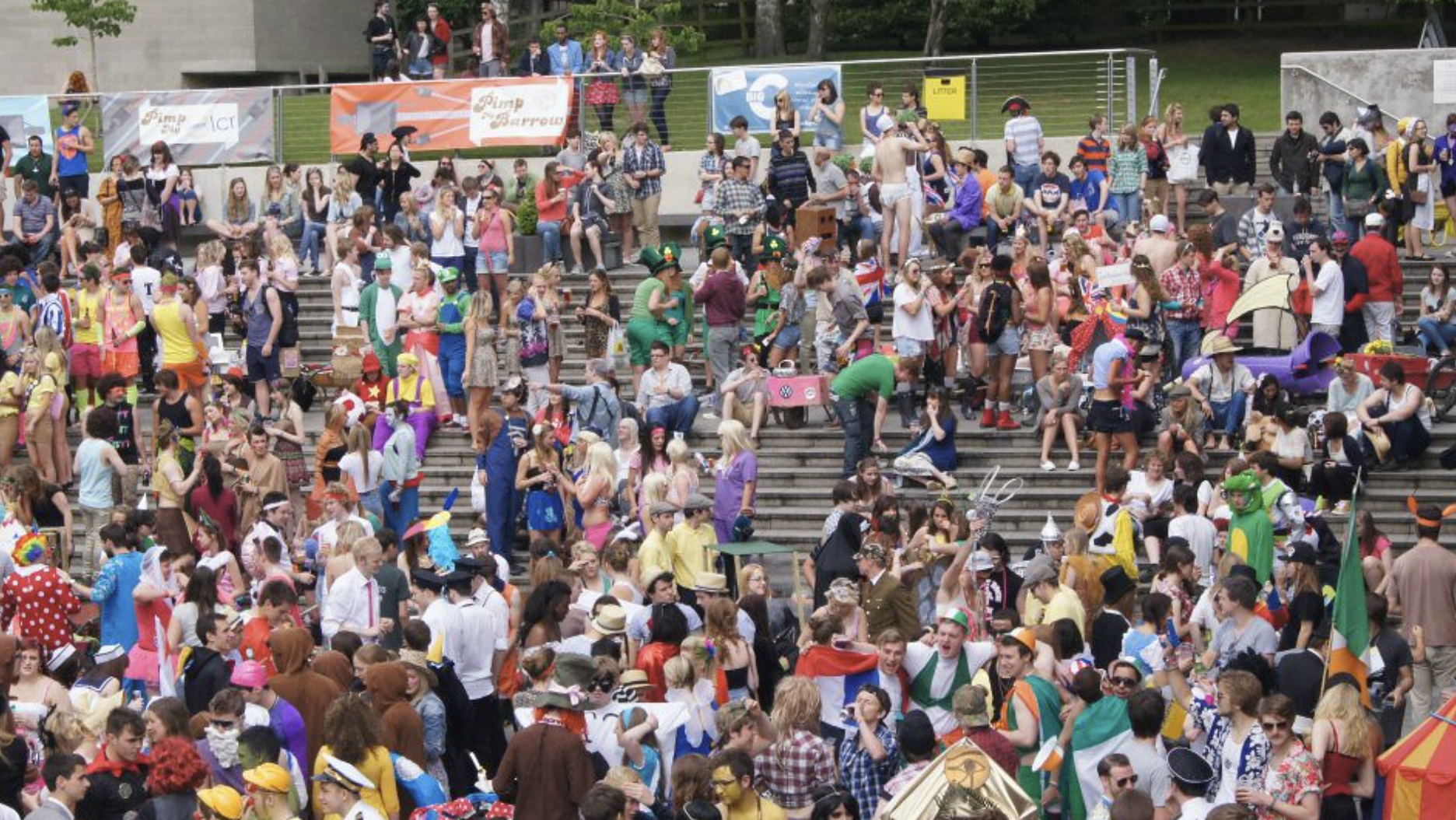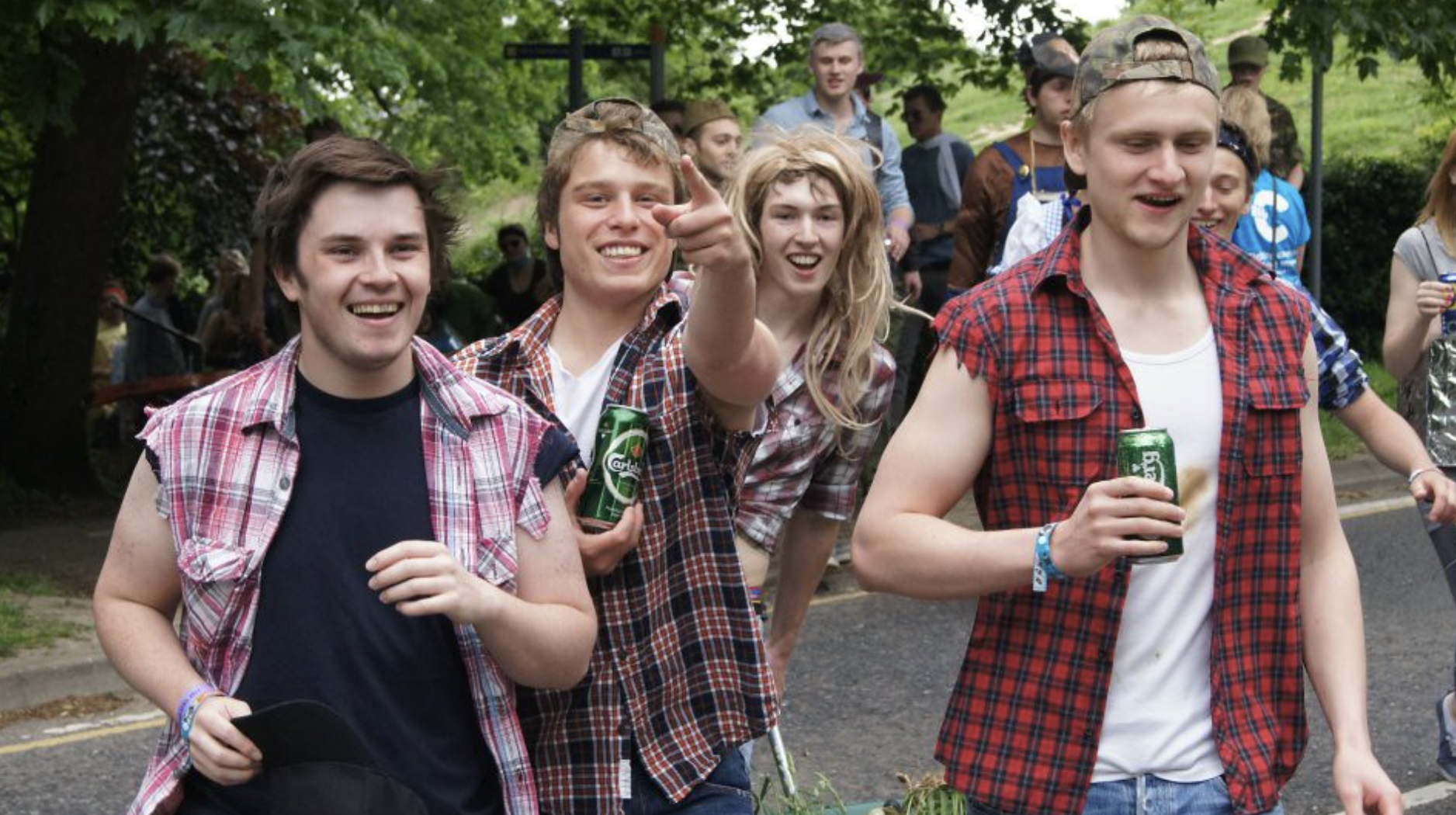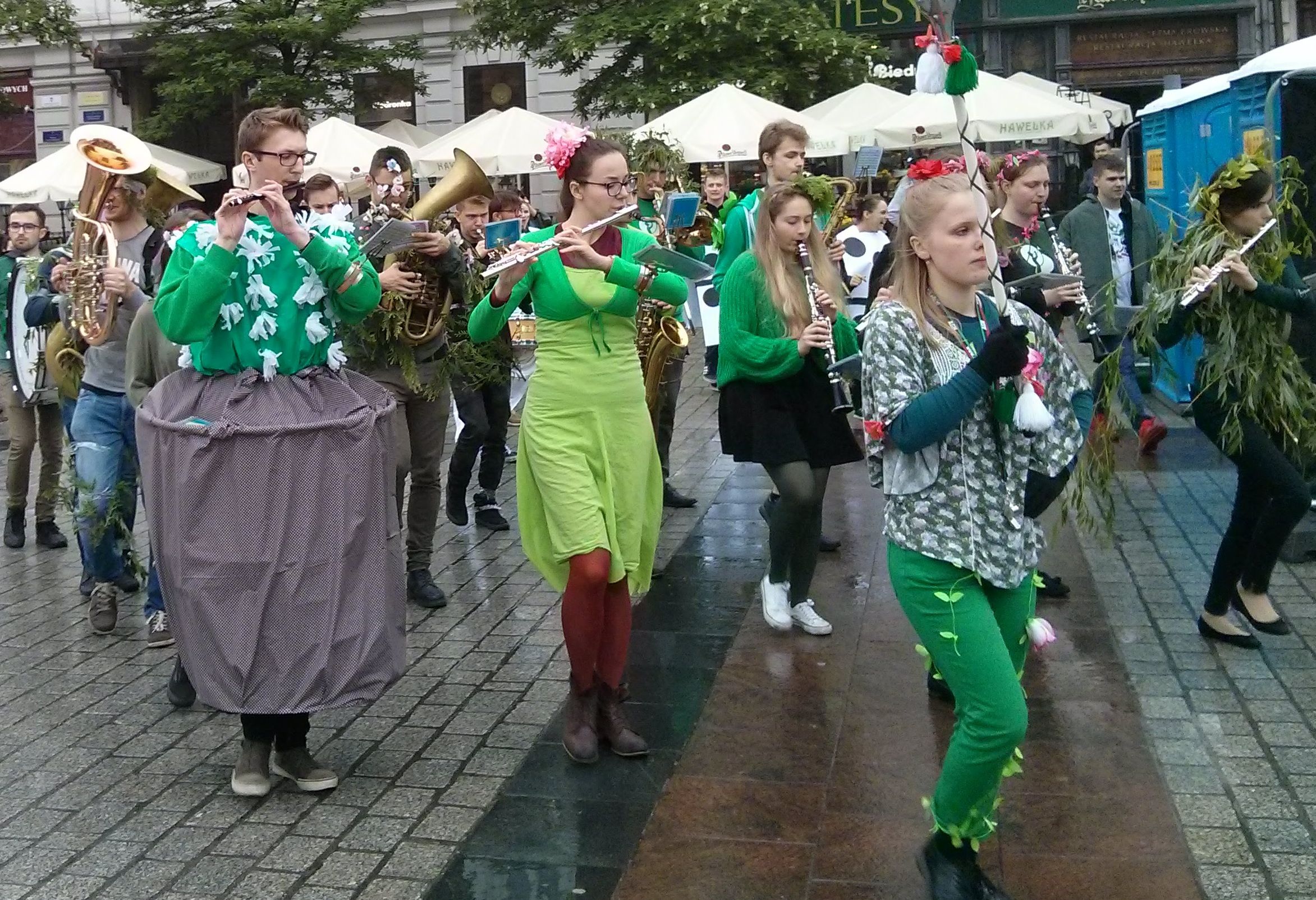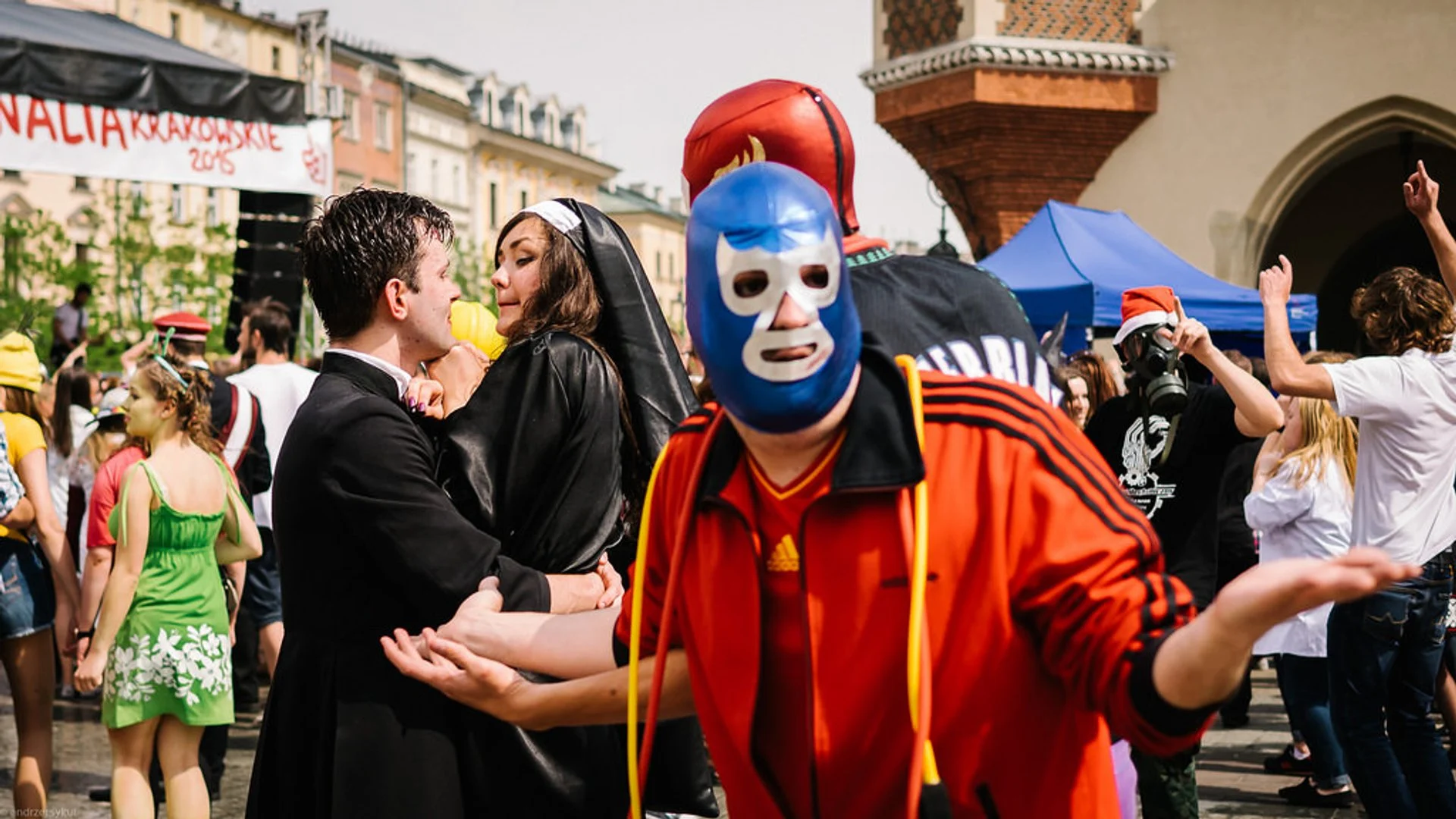When I arrived as a fresh faced CEO at UEA’s students’ union over a decade ago, one of the first things that appeared on my desk was “Pimp my Barrow”.
In amongst the other range of health and safety horrors associated with an SU that was a few years behind others on risk assessment was a large all-day event held each June that involved a lot of students getting drunk.
Named loosely after the popular “Pimp My Ride” MTV show, each year students would acquire (or buy, from us) wheelbarrows, decorate them according to their team’s chosen theme, and parade them around the local area.
The day typically began with drinking and music in UEA’s stepped concrete square, followed by a pub crawl through Norwich and wheelbarrow races in the local Eaton Park.
Officially, it was a fundraising event for “The Big C”, but it didn’t raise a lot of money. What it did do was cause me to lose sleep over the problematic photos, endless reputational risks, stories of injuries and damage done to the local pubs, and the obvious safety concerns associated with 2,000 drunk students in the square.

But what I realised fairly quickly was that it was an important part of the calendar to a lot of students. There was a queue around the building on the day we released the barrows. The local press always carried the photos.
And back in the days when “blogging” was still a thing that students did, a lot of students wrote effusively about their experiences of attending – and what it meant to them – with words like pride, friendship, celebration and tradition peppering the word clouds.
They cancelled PMB in the end. Health and safety.
A student celebration
My mind glides back to PMB every time we go to a European country on our study tours and hear about the role that large events and traditions play in student life on the continent.
Poland has its May Juwelania events – week-long carnivals filled with concerts, parades, and parties. Each city’s Juwenalia has its unique flavour, with Kraków, Warsaw, and Wrocław hosting particularly grand festivities.
We’re off to Sweden soon, where in Uppsala on the 30th of April, “Walpurgis Eve” is the celebration of spring arriving in Sweden. It’s the largest student event of the year with the “Donning of the [graduation] Caps” at the domineering library building, student floats running along the Fyris River and student singing at the Gunilla Bell Tower. It’s all organised by students.

Wappu is the big thing in Finland, which includes a herring breakfast, the chairs of the SUs delivering their Wappu greetings and the choirs performing – and a huge number of alumni getting involved too.
In Austria we found a huge rite of passage event – into both the mining profession (or its “related” professions) and the university itself – with every student (in the presence of the rector/VC) explaining who they are and their motto. And we’re soon off to Portugal – where the Carnation Revolution inspires no end of student-led festivals and events.
At the Stockholm School of Economics, Handelsdagarna is the largest annual event – and it’s no surprise that almost all students attend it for good reason. This remarkable week combines professional networking with inspiring lectures from prominent personalities, extravagant banquets, unforgettable afterparties and coveted “HD sponsbags”, whatever they are:
Engaging in this significant project will grant you valuable professional experience and allow you to pursue your interests, be it forging connections with companies, conducting interviews with renowned figures, or orchestrating banquets. No matter your passion, Handelsdagarna has a role tailored just for you!
The question I keep coming back to is why they survive and thrive in Europe (and, it seems in other countries too) – why those sorts of events are so important to students – and what it would take to bring some of that magic back (both from elsewhere and a mythical past) to the UK.
This has happened forever
Folklore, tradition, and ritual matter – they provide a connection to the past, to other people, and to a place, and allow students both to socialise and feel part of something larger than themselves.
There’s good academic research on traditions, and the way they can evoke a feeling of groupness, feel like something owned by students, and help to “see” smaller identities within a larger university.
They can make a sense of community feel more real, teach students about the history of their institution, and allow students to connect themselves both to those who have come before but to others they’ve never met.
Traditions can instill common values that span generations of students, generate pride and enthusiasm, strengthen students’ social identity, value systems, and emotional growth, and create belonging in an otherwise highly individualised mass institution.

The US literature – with all of its focus on “school spirit” – is full of examples.
Grubfest at Georgetown College is a food fight, framed by the Quad, that acts as a rite of collegiate separation and sanctioned mayhem, allowing students to break from childhood norms.
Rushes (e.g., Cane Rush) at Harvard are structured activities, often involving physical contests, that act as a way “to enable the students to give expression of their class spirit”. Defenders related the rush to pursuits in ancient civilisation, connecting physical and mental pursuits. They encourage union and friendly rivalry.
The Pull at Hope College is a tug-of-war event that’s also an expression of campus spirit, continuity of tradition, and social bonding. It provides a “sense of family and that sense of teamwork”. Students discover their endurance and push beyond perceived limits.
Eeyore’s Birthday Party at the University of Texas at Austin invites guests to dress in costume and features merriment and games, Spring Fever at Saint Louis University has activities like egg tosses and Jell-O wrestling, and Mackay Days at the University of Nevada at Reno is a spring festival that includes beard growing and pie eating, drilling and mucking contests, and dances.
Benefits to students
For those involved in the planning and running, there’s leadership experience, coordination of activities, and skills development to put on the CV. Research says that those involved shape a collective image and promote the feeling of community.
Students develop time management, and organisational administration skills. They learn how to manage resources, coordinate logistics, and work within budgets. They work with diverse groups of students, staff, and volunteers to enhance their ability to collaborate effectively.
They learn self-confidence and leadership through questioning and learning from others – and they learn about what everyone wants and needs, and how to reconcile competing priorities – they learn how to cultivate and lead a community on campus.

They offer a structured way to pass down the institution’s heritage, values, and legacy – traditions are transmitted through practice, word of mouth and imitation, representative of a group’s connection and legacy, and students get to own and embody them, albeit temporarily.
They bind new members to a distinguished past, re-establish ideals gone astray and construct new purposes by linking them to established models.
They’re accessible – it’s obvious how students get involved. They engage large numbers, create memories, and are both anticipated and reminisced over. They’re tentpoles in the memories which otherwise consist of working, studying, stressing and suffering.
Rituals and traditions matter – but they are under pressure.
Whatever happened to PMB?
Byung-Chul Han’s “Disappearance of Rituals: A Topology of the Present” explains how individualistic modernism and an emphasis of personal needs in modern mega-universities contrasts with the communal traditions of smaller universities in times past.
He argues that the disappearance of symbols and rituals is linked to the increasing atomisation and narcissism of society. Without rituals, there is a loss of resonance and accord, leading to isolation – and a crisis of community.
He explains how the assertion of administrative control – the emphasis on progress, and “making time count” and heterogeneity associated with modern campus life renders traditions anachronistic.
Some traditions, he says, get discontinued over injuries, fatalities, and safety concerns. Some die because of social concerns – symbolism that feels out of place, dated, or something we’ve moved on from. And “rites of passage”, which he says give structure to life, are being erased and replaced by accelerated communication and production.

We know the arguments. Students are more focused on personal needs and professional training rather than formative education and community engagement. Students in mega-universities struggle to find a sense of social belonging because of the highly individualised mass society.
Universities and their SUs are concerned about risk during large-scale events, and anyway, many of the traditions involve bullying or hedonism or putting students at risk of harm.
Many of the old traditions fail to create an inclusive environment for historically marginalised students, some send a message that some members of the student community are more valued than others, and anyway – students haven’t got the time, or the money, and so on and so on.
Next steps
So can it be done? I’ve been reading the literature and looking at the case studies, and it looks like there’s a set of steps that an SU could take to recreate or even “invent” new traditions, rituals and events.
The first is establishing internally, and in the university, how important traditions are. They play a vital role on campuses and are a measurement of culture. They can represent the best parts of an institution and its values. They can provide a sense of belonging, social connection, and context to university values. And they look great in photos.
Recognising the importance of traditions in addressing student needs for social belonging, psychological adaptation, and a sense of community is next. Traditions help students transition between life stages, adjust to their environment, and work through issues relevant to their age and campus context.
They are especially important in mediating between public and private social worlds where values often conflict. When we think about the shift from communal activities to individualistic character in modern students, there’s an obvious need to create traditions that cater to both.

Ensuring that students are part of the creation, planning and decision-making process from the start is in most of the literature. It helps understanding what needs to be done to improve existing traditions and drives the creativity needed to make something special.
Old photos help. Mascots matter – if you don’t have one, get one. Anniversaries matter. Slogans assist. Deliberately convening a large group of people just to throw ideas around helps. Giving everyone something to do – even if only some of those tasks come back in – helps too.
Designing something to be inclusive and welcoming to all students, regardless of background or identity is an essential – as is making it obvious and easy for students to get involved, and so promoting social bonding, cultural growth, and self-development. School plays sell out.
Compilation is also crucial in the literature. So many of the events we’ve seen – from Pimp My Barrow to the new student festivals in Latvia to the new student treasure hunts in Finland – involve asking existing groups to contribute something; a float, a costume, a skit, an activity, a song or a space. It’s literally how Freshers Fairs work.

Aligning a new tradition with the institution or union’s long-held values helps too. What stories are in the place’s past? What did students do that can be reinvented? What photos from then might students want to remix now?
Generating excitement and anticipation for the new tradition is a given, paying regard to the health and safety of students matters, being prepared to accept it will start small helps, and adapting and modifying based on feedback is crucial too.
But the other thing that’s clear is that they take time. Not as much time as you’d think – examples like this demonstrate how quickly you can build something that now feels like it’s been around forever. But if you’re a student officer or a staff member likely to leave soon, you are paying it forward here. Year 1 won’t be amazing. Years 3 and 4 may well be.
Hats off to that
If I think of what UK graduation ceremonies in universities represent, they are a moment of collective recognition – a rare instance in which students, their families, and the institution itself pauses to acknowledge the effort, growth, and transformation that have taken place.
Students look forward to them. They spend money on costumes. They embody the past, as well as the future. Everyone is smiling.
They are, outside of the odd Oxbridge boat race or St Andrews Raisin Monday, one of the only rituals we have. The robes, the procession, the handshake, the speech – each element is carefully designed and refined to signal a rite of passage, a movement from one stage of life to the next.
So why is it that, in the UK, these moments of communal celebration are so infrequent? Why do students so rarely get to experience traditions that mark their time during university, rather than just at the end? Why do they seem exclusive to elite universities?

Across the world, students don’t just inherit traditions – they shape them, own them, and pass them on. Their rituals are vibrant, messy, creative, and student-led, reinforcing a sense of belonging that lasts long after the moment has passed. They create memories that students carry for life – smiling faces in the crowd, the shared joy of a tradition passed down, the warmth of togetherness, the thrill of collective achievement.
They’re more than events with an excel sheet budget or a risk assessment attached – they become the stories people tell years later, the moments that define their university experience.
What a shame then that largely in the UK, they happen only when students are leaving, and are rarely organised by students themselves. SUs surely can, and surely should, change that.
Read more
How to turn a bar crawl into a Freshers Adventure
Refreshing freshers and celebrating events
Thirty ideas for revitalising welcome week from across Europe
Students need shallower ends to build belonging during Welcome Week
High time to refresh our approach to Freshers
Plus:
Campus Traditions: Folklore from the Old-Time College to the Modern Mega-University
The Disappearance of Rituals: A Topology of the Present
Tradition Today: How Student Affairs Professionals Can Strengthen


















